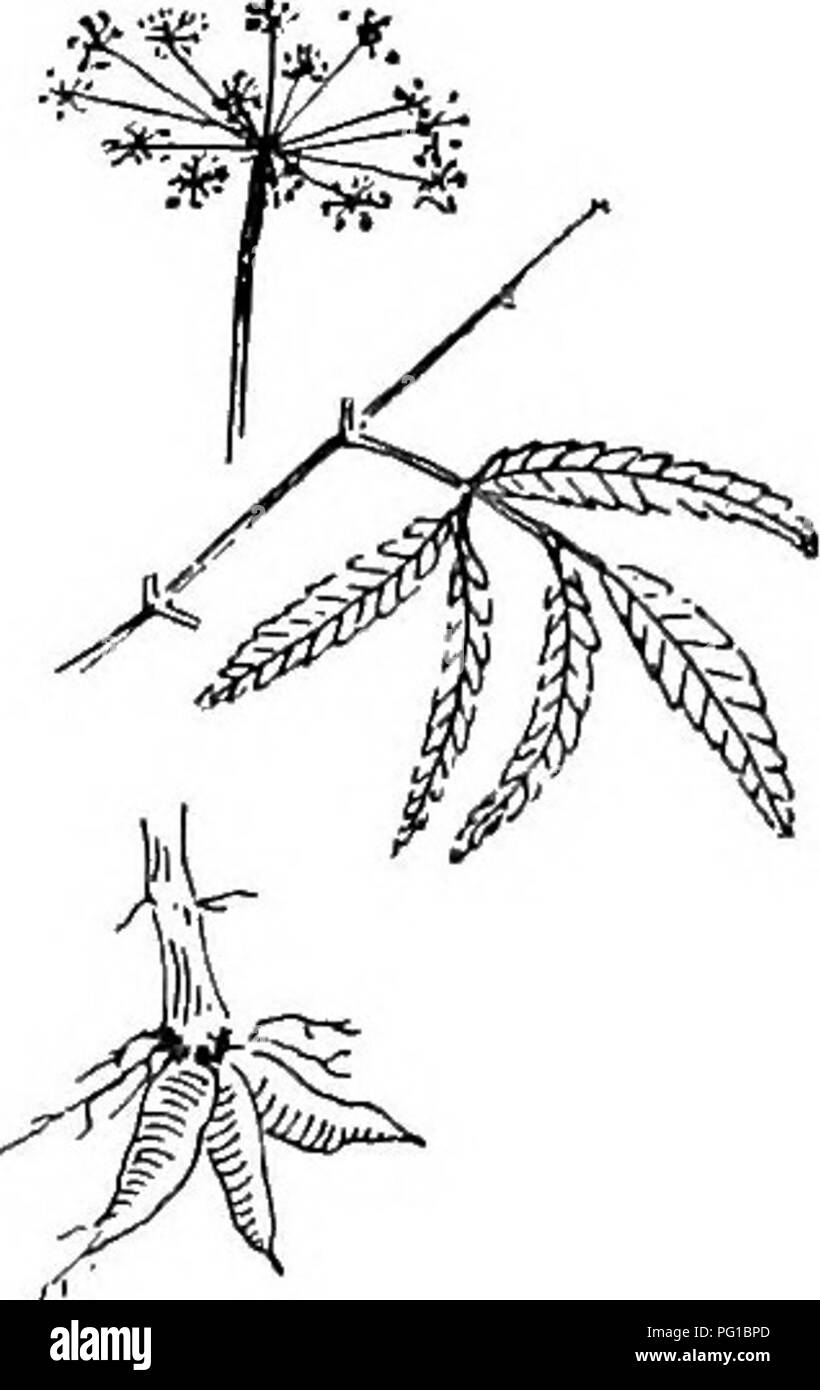. The natural history of the farm; a guide to the practical study of the sources of our living in wild nature. Natural history. 6o NATURAL HISTORY OP THE FARM. Fig. 33. The poison hem- lock: portions of flower cluster, leaf and root. inedible, and a few like the water hemlock (Fig. 33) are very poison- ous. All the cultivated sorts, radishes, beets, turnips, carrots, parsnips, chicory, etc., are natives of the old world. The last named, where cultivated, is chiefly used to make an adulterant for coffee, and has scarcely any nutritive value. American tubers are much more valuable. Indeed, the m

Image details
Contributor:
Central Historic Books / Alamy Stock PhotoImage ID:
PG1BPDFile size:
7.2 MB (178 KB Compressed download)Releases:
Model - no | Property - noDo I need a release?Dimensions:
1256 x 1990 px | 21.3 x 33.7 cm | 8.4 x 13.3 inches | 150dpiMore information:
This image is a public domain image, which means either that copyright has expired in the image or the copyright holder has waived their copyright. Alamy charges you a fee for access to the high resolution copy of the image.
This image could have imperfections as it’s either historical or reportage.
. The natural history of the farm; a guide to the practical study of the sources of our living in wild nature. Natural history. 6o NATURAL HISTORY OP THE FARM. Fig. 33. The poison hem- lock: portions of flower cluster, leaf and root. inedible, and a few like the water hemlock (Fig. 33) are very poison- ous. All the cultivated sorts, radishes, beets, turnips, carrots, parsnips, chicory, etc., are natives of the old world. The last named, where cultivated, is chiefly used to make an adulterant for coffee, and has scarcely any nutritive value. American tubers are much more valuable. Indeed, the most valuable root crop in the world is the potato. The potato crop stands among our crops second only to the wheat crop in cash value. And an acre of potatoes may produce as much human food as ten acres of wheat. The only other native tuber that is extensively cultivated is that of the arti- choke {Helianthus tuberosus) which maintains itself wild in great patches in many a rich bottomland thicket. The artichoke is able to win out over the other herbaceous perennials by reason of its sheer vegetative vigor: it over- tops them all and gets the stmlight. And when it blooms, it overspreads the thicket with a blaze of yellow sunflowers in late summer. There is another native tuber, however, of great promise: it has higher nutritive value than the potato and is very palatable; it is the so-called groundnut (Apios tuberosa). The plant is a vine, that grows in moist thickets and clambers over low bushes. It bears brownish purple, violet-scented, papilionaceous flowers in dense clusters in mid- summer. The tubers are borne on slender undergrotmd stems, often a number in a row, and are roundish or pear- shaped, very solid, and when cut, exude a milky juice, like a sweet potato. Doubtless, this valuable plant, which furnished the Indians with a dependable part of their living, . Please note that these images are extracted from scanned page images that may have been digitally enhanced for